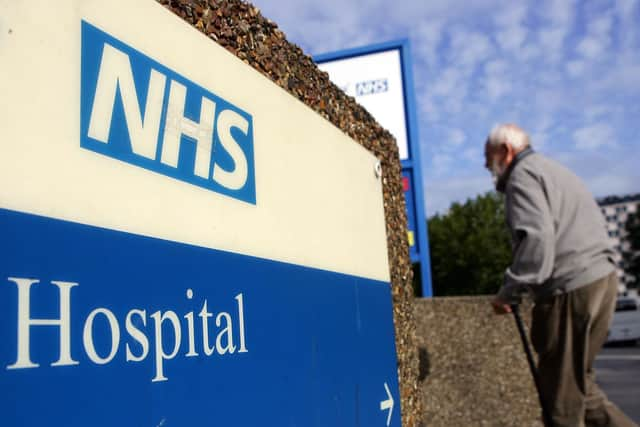RAAC concrete: Scottish healthcare workers worried about their safety in NHS buildings containing unsafe concrete
Healthcare workers are “worried” about their safety following the discovery of unsafe concrete in hundreds of NHS Scotland buildings, a union has claimed, leading to calls for all public sector buildings to be assessed.
NHS Scotland is conducting a survey programme that will confirm how many buildings in the NHS estate contain reinforced autoclaved aerated concrete (RAAC) – a cheap version of the material that is at danger of sudden collapse.
Advertisement
Hide AdAdvertisement
Hide AdNow GMB Scotland has written to the First Minister calling for detailed assurances on the safety of buildings across the NHS and public sector and a commitment that structural engineers will carry out regular inspections.


Keir Greenaway, senior organiser in public services for GMB Scotland, said NHS staff and patients needed absolute clarity on the safety of buildings.
He said: “So far, we have heard little from the Scottish Government but assurances that there is nothing to worry about. That is fine as far as it goes, but that is not very far when hundreds of NHS buildings apparently contain the same concrete that has prompted the sudden closure of schools in England days before the start of a new term.
“Our members working in the health service are worried, their colleagues are worried and patients will be worried. It is beyond time for ministers to take this issue seriously and treat it with the urgency and clarity it deserves.
“Every possible step must be taken to protect the health and safety of staff and the public and communicate openly and honestly with frontline workers.”
The Scottish Government has said the lightweight concrete is present in 35 schools in Scotland, with local authorities checking which other buildings it was used on, including hospitals and social housing, and 254 NHS buildings.
The concrete has so far been found in University Hospital Crosshouse, near Kilmarnock, and in Biggar Health Centre, though neither the NHS Ayrshire & Arran or NHS Lanarkshire health boards have closed their respective buildings.
NHS Highland confirmed it had “identified some areas within our estate that could potentially have RAAC”. But when asked by The Scotsman, the health board would not say whether there were any total or partial building closures.
Advertisement
Hide AdAdvertisement
Hide AdOther Scottish health boards contacted by The Scotsman confirmed they had not found RAAC in their building portfolios, although NHS Greater Glasgow & Clyde – the country’s largest health board – is still assessing.
On Monday, Humza Yousaf said: “It was important to do the desk-based review, but it’s also fair to say that where NHS sites, in particular, feel there needs to be a physical investigation, then there will be a physical investigation if that’s required.
“Given the size of the estate we’re looking at, not just the NHS but the public sector estate, it will take some months to complete that fully.”
Mr Yousaf said “but, of course, it’s not a binary, it’s an evolving picture”, claiming that “appropriate mitigations” would be put in place when the concrete is found.
Comments
Want to join the conversation? Please or to comment on this article.